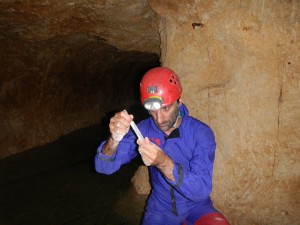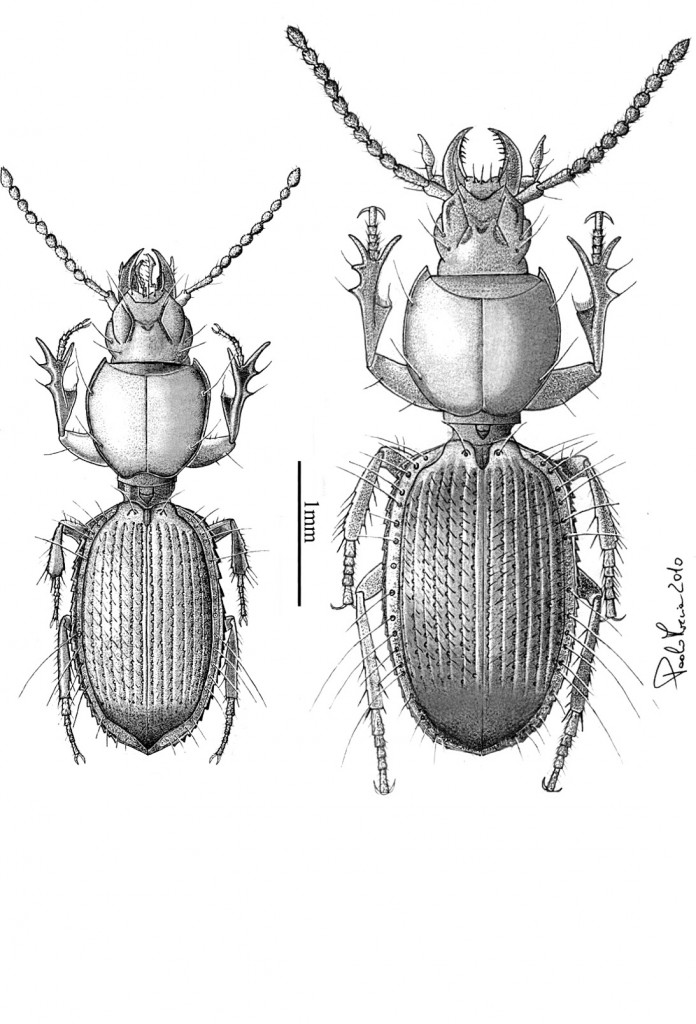When Jo and I discussed how to improve the science programme from 2011 to 2012, we both agreed that speleobiology had to come first. But we hadn’t taken a decision on it, and I was enjoying my months of in-between-CAVES life when, guess what? I subscribed to a course in cave meteorology, in Sardinia. When I received the detailed programme, I saw that the course was going to present the first scientific results of CAVES 2011, and that Laura was going to be one of the lecturers (she was not yet part of my team at the time). One of the other lecturers was a speleobiologist. His paper was about monitoring the environment in a cave where he had been sampling bugs.
I believe that Paolo found me rather than the other way round. Part of the course included a field trip to some meteorological stations. I had my car but no clue where to go, so Paolo volunteered to accompany me. Which was very fortunate because, in order to engage this very introverted creature in conversation, I asked him a lot of details about his job, and I started to ask his opinion on a potential scientific experiment looking for bugs. He immediately suggested some drilling activities, which Jo rejected for CAVES2012 but which came back as an educational experiment in CAVES2013: Catch that bug!
It turns out that speleobiology is one of the most complicated experiments in CAVES. It is time-consuming, but also very demanding in terms of preparation, and challenging for participants. And yet, in 2012 a new species was discovered. We’re still waiting for the full morphological study and the publication to know the name of our species. My curiosity is never satisfied by the very secretive Paolo!
Despite his shy appearance and his introversion, Paolo is a very sensitive person with a great sense of humour and an impressive ability to spot nearly-invisible beings moving in his surroundings, which he then draws in incredible detail. And most importantly of all, he is incredibly motivated.
Loredana Bessone



Discussion: no comments